The RPM vs CPM Formula topic on YouTube is highly confusing and has misleading definitions. Hence, we came to the rescue and helped creators to understand.
Abbreviation of RPM & CPM:
- RPM: Revenue Per 1000 Impressions
- CPM: Cost Per 1000 Impressions
RPM and CPM formulas are used to calculate ad revenue and investments. These formulas might apply to all platforms.
However, it plays an important role in the YouTube AdSense Partner Program for creators to calculate their ad impressions and Revenue.
Hence, to overcome all your doubts, I bring you this article with detailed explanations of:
- What is the CPM Formula?
- Also, What is RPM Formula?
- Difference between RPM and CPM on YouTube
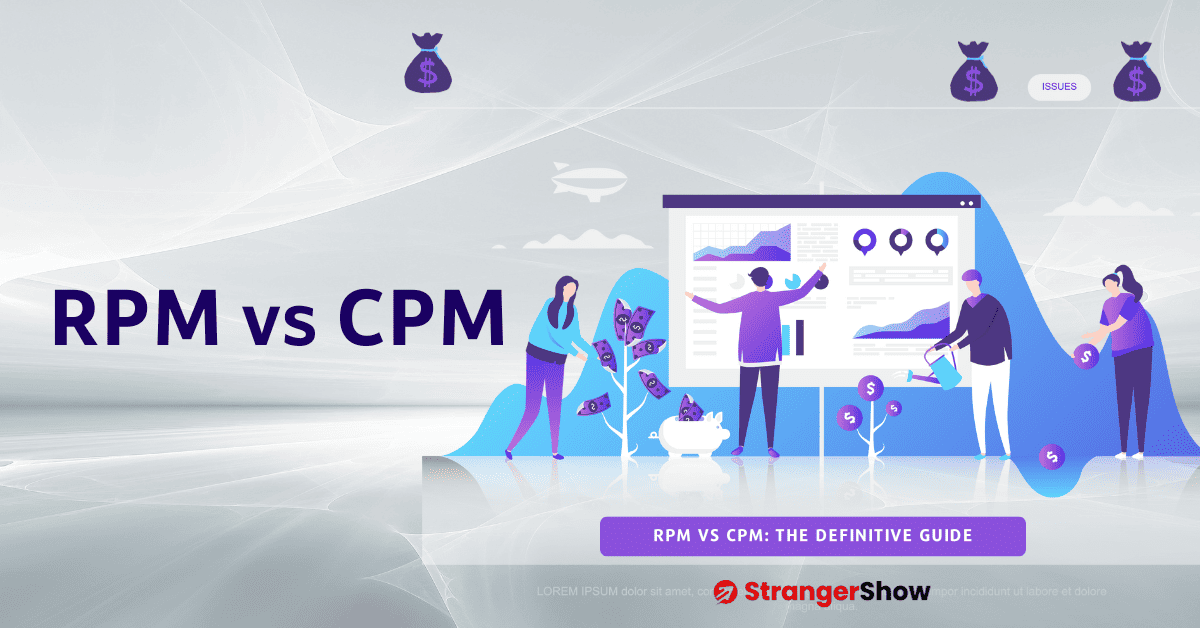
What is Impressions?
Additionally, we will frequently use the word “Impression” in this article. In YouTube creator’s terms, impression refers to the ad or video displayed on the video or YouTube suggestion.
- Let’s simplify this. Imagine an advertisement displayed on your YouTube video. Even if only 100 viewers observe it without clicking, these 100 views are your video ad impressions. This straightforward concept helps you understand the role of video ad impressions in measuring ad visibility.
I hope you’re clear about impressions. Let’s see RPM vs CPM Formula.
RPM vs CPM on YouTube
CPM Formula
CPM stands for Cost-Per-1000 Impressions. By definition, it refers to the amount advertisers pay per 1000 impressions on the platform.
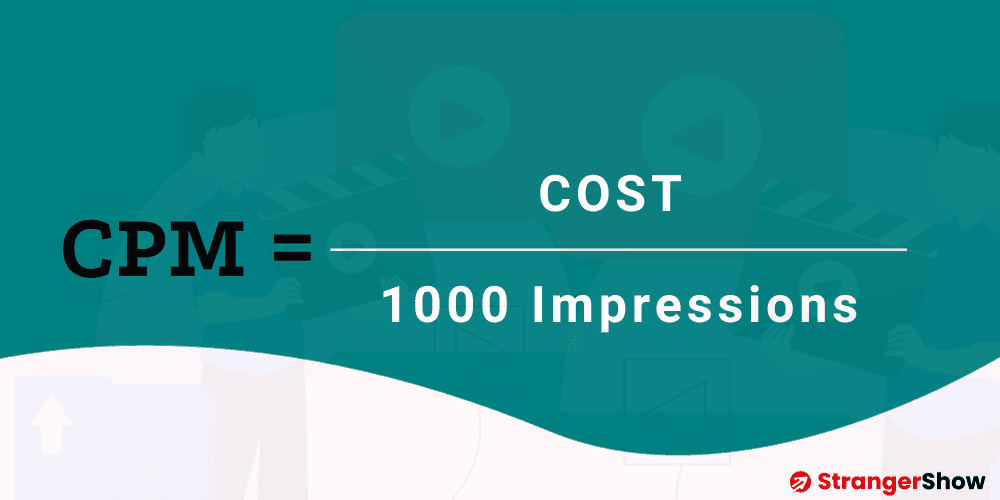
The advertisers determine the amount per 1000 impressions. Moreover, the Adsense company cannot compel the advertiser to pay a certain amount per 1,000 impressions.
The following examples understand you better.
CPM Formula Examples
Consider that a soft drinks advertisement company called A. Company A invested $5,000 in the ad campaign. Furthermore, the company determined to pay $2.5 per 1000 impressions.
Now, $2.5 is the CPM of the A advertisement company. Therefore, if your video gets 1000 ad impressions (not mandatory to receive ad clicks, just ad impressions) from the company A product alone, your revenue is $2.5 per 1000 ad impressions.
However, it’s important to note that this entire $2.5 will not come into your pocket. YouTube takes around 45% of the commission, and the remaining 55% comes to you. This means that, in reality, you will receive roughly $1.375 per 1000 impressions. Understanding this can help you better plan and manage your content creation strategy.
I hope the above examples clear your fundamental doubts. Try to re-read the definition, and you will be all clear.
RPM Formula
RPM stands for Revenue-per-1000 impressions. It directly refers to the estimated earnings of your 1000 video views. The RPM formula is,
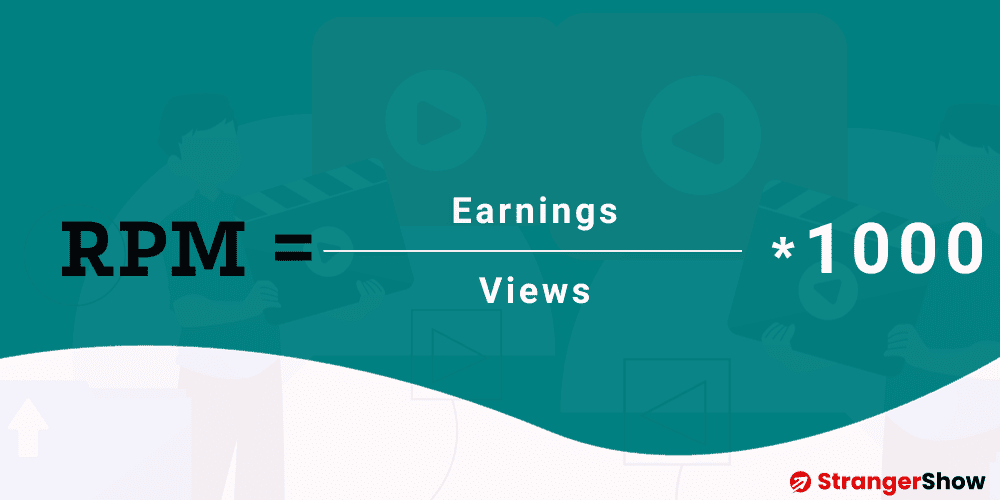
However, it’s not your actual earning number, but it’s close to that number. To make it more transparent, let’s look at some of the examples with rpm vs cpm.
RPM Formula Example
Consider your 5,000-view YouTube video. And assume you’re getting 2000 ad impressions/clicks from that video.
Like the above example, take the same company A; we know its CPM is $1.375. Now, let’s crunch some numbers. For those 2000 ad impressions, the X advertiser will be ready to pay you around $2.75.
Therefore, we have,
- Earnings = $2.75
- Views = 5,000
Now, let’s apply the RPM formula and calculate the estimated earnings of your 1000 impression RPM.
RPM = ($2.75/5000) * 1000
The answer is $0.55, which is your RPM. YouTube shows your RPM in the analytics dashboard; however, you can calculate it independently. I hope you’re not confused with RPM vs. CPM; anyhow, let’s see another example for better clarification.
Example 2
Now, consider you have the same views as 5000 from your YouTube video. Also, assume you get 2500 ad impressions.
But now it came from two ad companies, “A” and “B.”
- CPM of “X” is $1.375
- CPM of “Y” is $3.00
So, the A advertiser will pay you around $2.06 per 1500 impressions. Similarly, the Y advertiser will pay you $3 per 1000 impressions. This ensures a fair calculation, and in total, you have $5.06 from the ad impressions. Let’s now calculate your RPM,
RPM = ($5.06/5000) * 1000
The resultant RPM is $1.01 per 1000 impressions. Here, you see the RPM changed consistently, right?
Yes, the RPM is not a fixed value but varies based on several factors. Your content, advertiser, budgets, revenue commission, country, and other metrics play a significant role. But remember, you have the power to influence these factors. Understanding them can empower you to make informed decisions and optimize your monetization strategy.
On average, a good RPM for better revenue on YouTube is between $7 to $10. Above this number is great-performing.
Also, here is the detailed analytics report of Cathrin Manning’s YouTube channel’s RPM and CPM Values:
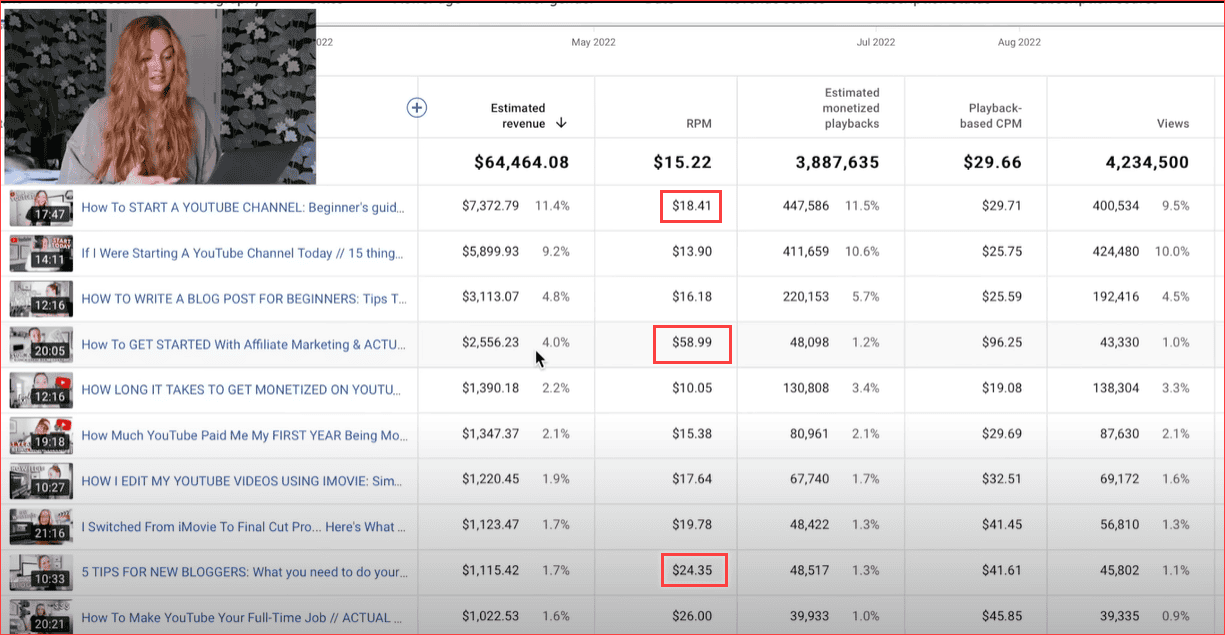
Difference Between RPM vs CPM on YouTube
Let’s see the differences between RPM and CPM on YouTube. Additionally, the table below clearly explains the difference between RPM and CPM.
| 📈 CPM | 📈 RPM |
|---|---|
| Full-Form: Cost-Per-1000 Impressions | Full-Form: Revenue-Per-1000 Impressions |
| The amount the advertiser willing to pay | The estimated amount of publishers can earn |
| Amount desired by ADVERTISER & MARKET | Amount desired by FORMULAS and Other Metrics |
| An actual amount the advertiser likes to pay | The estimated amount, the creator will get every month per 1000 views |
| An advertiser focusing area | A creator’s focusing area |
I hope you understand the concept of RPM and CPM Formula. It would help to concentrate more on increasing your CPM so your RPM will automatically increase. But the question is, how can I improve it?
Many factors help to do that, but one of the simple things is focusing on the target keyword.
With all the above said, if you’re focusing on YouTubing, then YouTube’s Best Keyword Finder SEO Tools help to do it.
Use it properly in SEO places like video titles, descriptions, and tags, and over time, you’ll get better CPM and RPM numbers.
FAQs of RPM vs CPM
1) What is the CPM Formula?
Firstly, CPM = (Cost/1000 impressions)
2) What is the RPM formula?
Secondly, RPM = (Earnings/views) * 1000
3) Difference’s between RPM vs CPM?
RPM is the estimated amount to make per 1000 video views. On the other hand, CPM is the amount the advertiser is willing to pay per 1000 ad impressions.
Conclusion
In conclusion, the RPM vs. CPM and other revenue calculation metrics are not rocket science. Take care of your Video SEO; the remaining parts will be done automatically. Comment here if you have doubts; let me clarify them. Also, share this post on Pinterest.
Also Read,
- Basic Formulas to Calculate Google AdSense Earnings
- How to Create a YouTube AdSense Account
- How To See How Much a YouTube Channel Makes: Estimated Earnigs
Sharing is caring!
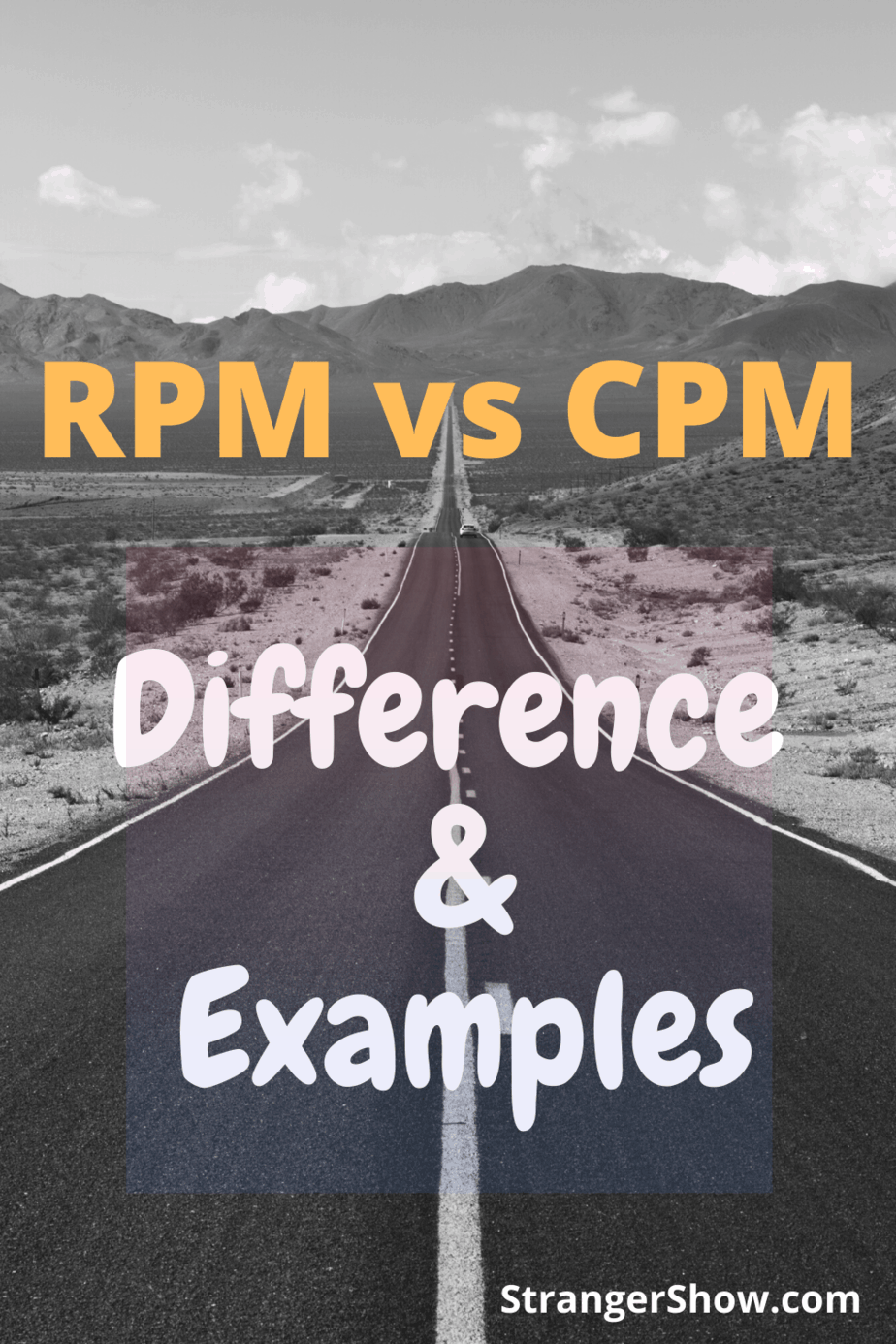
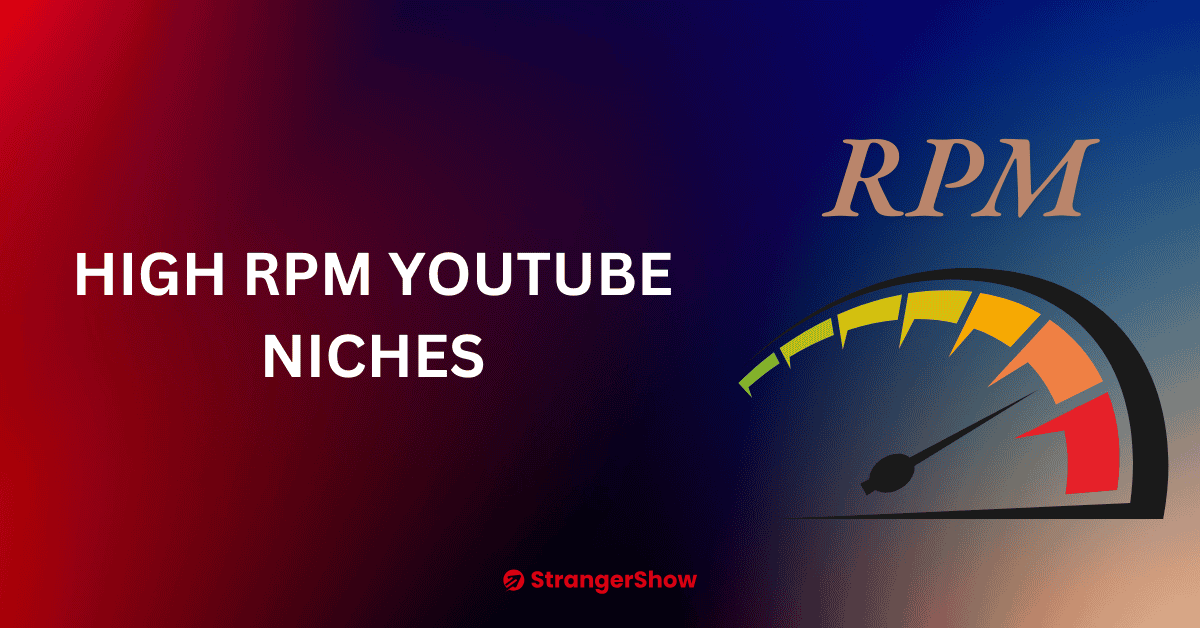


![Google AdSense Payment way in India [Cheque or EFT transfer]](https://strangershow.com/wp-content/uploads/2020/04/Google-AdSense-Payment-way-in-IndiaCheque-EFT.png)